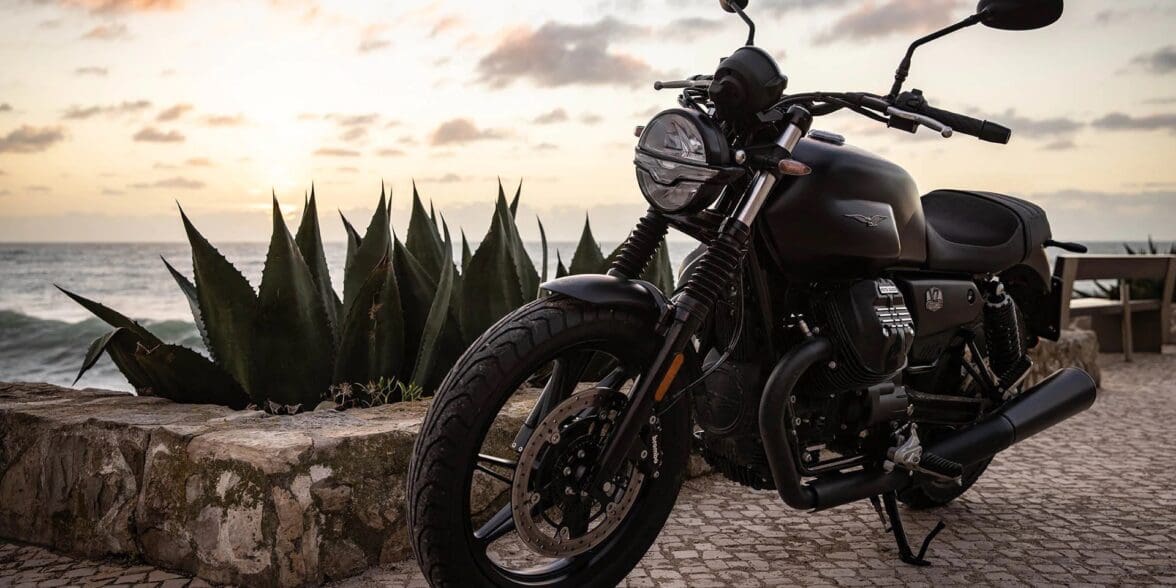When someone mentions Italian motorcycles, the first image that goes through pretty much everyone’s head is that of a sleek, powerful supersport carving corners like a scalpel. If you ask the scooter crowd about Italian bikes, you’ll get your ear gnawed off about Piaggio and Vespa. These are two extreme ends of a massive spectrum that the Italians do very, very well, but there is a company that is happy to be smack dab in the middle of the spectrum, with their neo-retro styled standard bikes and a couple of off-roading ADV bikes.
Moto Guzzi was founded on March 15, 1921, as Società Anonima Moto Guzzi, with the incorporation document stating that it was formed for “the manufacture and sale of motorcycles, and all other activities pertinent or related to the metalworking and mechanical engineering industries.” Formed by Emanuele Vittorio Parodi with his son Giorgio and friend Carlo Guzzi, it was quickly decided that the company’s logo, the eagle taking flight, was to honor Parodi’s friend Giovanni Ravelli, who died during a test flight in 1919.
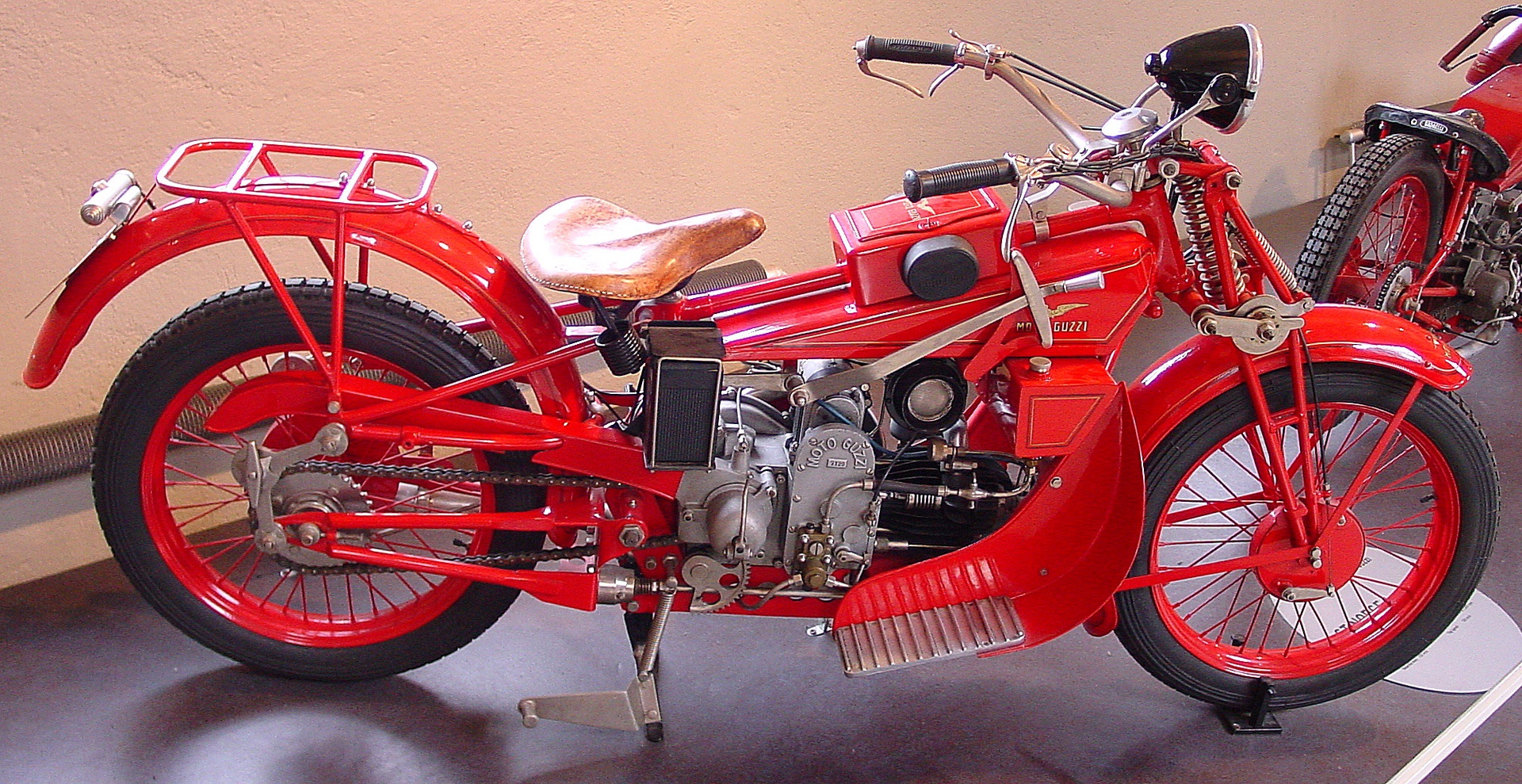
During the early years, the company was mostly focused on 250cc and 500cc single cylinder engines mounted in steel frames that even to this day stir emotions of any motorcyclist, creating bikes such as the Normale and the Norge. Of note, Moto Guzzi single cylinder engines were mounted with the cylinder pointing straight forward, to maximize air cooling and reduce vibrations.
It was because of this layout that in 1933, Carlo Guzzi had a brilliant idea and mounted another cylinder 125 degrees apart from the front facing one—tucking it between the fuel tank and frame, and under the saddle seat. The 1933 Moto Guzzi 500 Bicilindrica was the first motorcycle from the company that held their now signature engine, the V-twin.
The Strangest Engine Orientations: How Moto Guzzi Defined Their Own Normal Over a Century
In a cruel twist of fate, just as Moto Guzzi was gaining steam in the market and was set to produce more models with their smooth and powerful V-twin, World War II broke out. Instead of producing road bikes and continuing their modest success in racing, the company instead produced the Moto Guzzi 500 TriAlce, a tricycle bike with a rear deck and a 20/65 caliber machine gun mounted on it. It was used by motorized and mechanized infantry as a patrol vehicle, a mobile assault platform, and a troop transport, among other things.
It was in 1946, after the war was over and Italy had begun to rebuild that Moto Guzzi, with nothing else to lose, decided to go for all the titles. What happened next is still referred to in Italy as “The Season of Great Victories,” as the first post-war race bike, the Gambalunga 500, was virtually unbeatable on combined road and track circuits. It was followed quickly by the Gambalunghino 250, which won the first ever 250cc GP championship, and the Mandello Twin, which was one of the fastest race bikes of the time.
It was also at this time that one of the hallmark bikes of Moto Guzzi was built, the insane Guzzi Otto Cilindri. What made it insane was that the engine was a 499cc, four-stroke, dual overhead cam V8. The bike was built around the engine, with the fairings coming all the way back to the pegs to give maximum aerodynamics. That awesome V8 produced a then-unheard-of 80 HP at 12,000 RPM, and with a six-speed transmission, the Guzzi Otto Cilindri held the world racing motorcycle speed record at 275 KPH (171 MPH) for over 20 years.
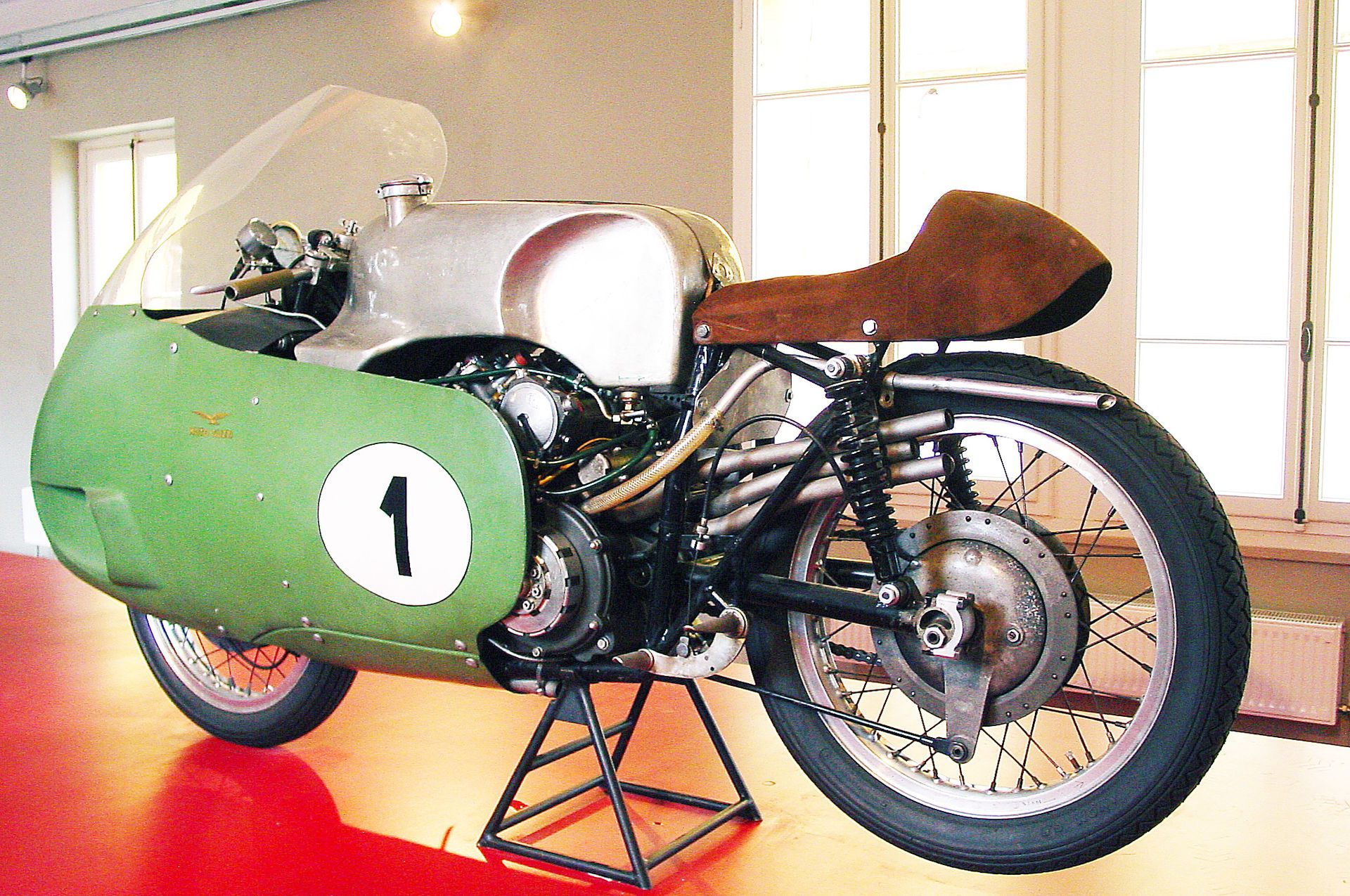
Due to the rise of microcars like the Austin Mini and Fiat 500 as viable race cars, Moto Guzzi pulled out of motorcycle racing in 1957—after winning 3,329 race wins, 14 world titles, and 11 Tourist Trophy victories. The company also came out of the 1950s with a lot of research and development work done for racing engines and materials to build bikes with, which unintentionally led to the most significant point in Moto Guzzi’s story.
In 1967, after referencing all the racing development and knowledge they had gained, Moto Guzzi introduced their 90-degree V-twin. While there are plenty of V-twin engines out there in the world, it was the brilliant idea of Giulio Cesare Carcano, the man that led the racing team’s design and engineering department, to mount the engine transversely.
The issue with a longitudinal mounting, according to Carcano, was that there was parasitic loss of power by having to move the power through a series of gears to the transmission along that longitudinal line. Putting the transmission directly on the side of the engine would unbalance the bike and also make it very uncomfortable for your shifting foot.
Conversely, by having the engine transversely mounted, the crank feeds directly into the transmission—no gears, pulleys, chains, or the like between the power and the transmission.
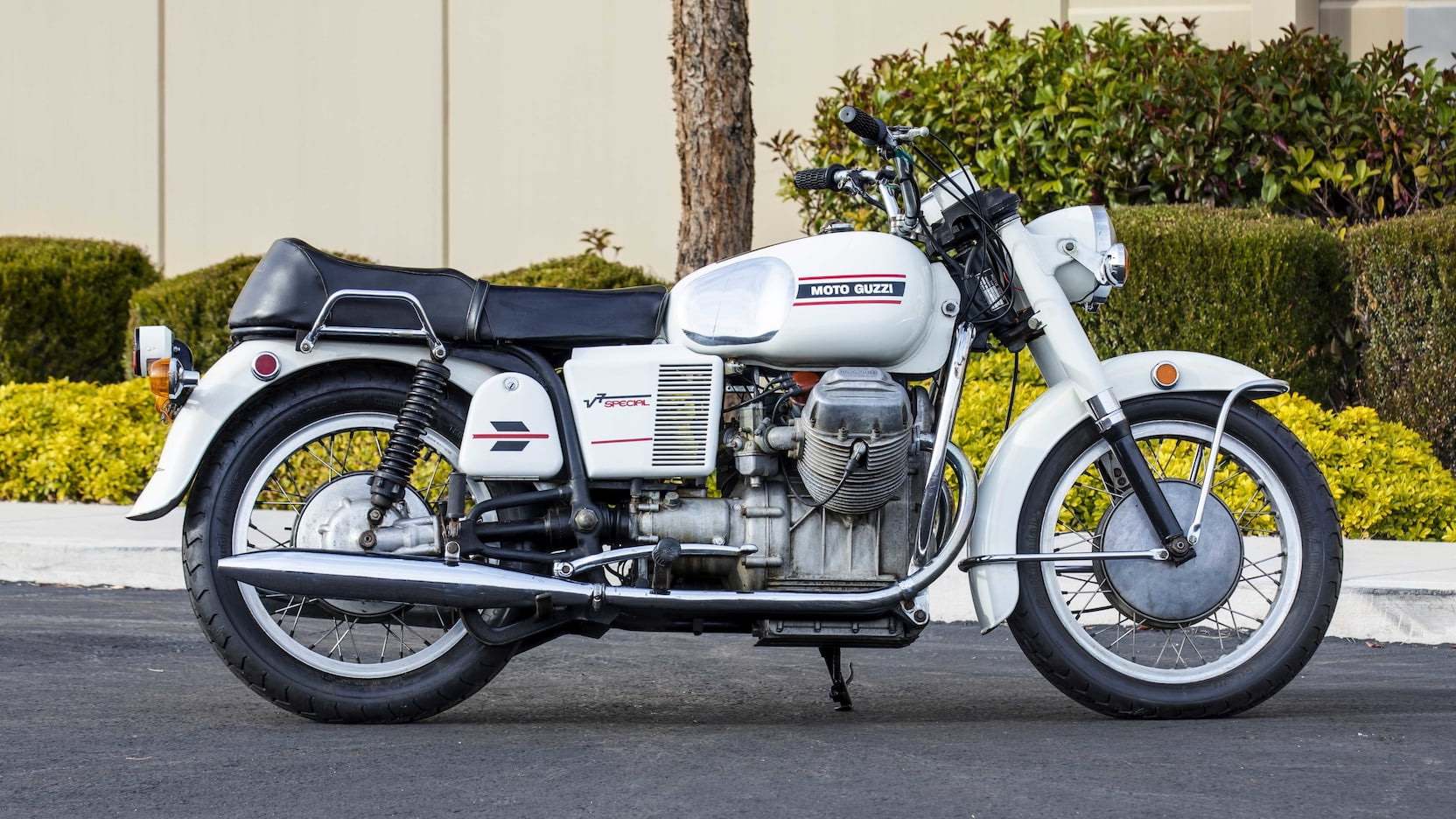
The transverse mounting, which soon became Moto Guzzi’s standard mounting for all their bikes and engines, did have a few interesting effects to the ride of the motorcycles. The most prominent of these was a slightly asymmetrical gyroscope effect that doesn’t destabilize the bike, but does take getting used to when cornering, as the bike feels like it is wobbling in the corner. Despite this, the first of these engines, a 700cc, 45 HP unit, in a prototype frame designed specifically around the transverse mounting, won a competition from the Italian government to build the next series of police bikes.
As it was the 7th V design in the company, after the original V-twin, racing V-twins, the insane V-8, and with Moto Guzzi starting to encounter financial issues to the point that they almost entered receivership, that prototype frame and engine combination was simply named the V7. For anyone that knows Moto Guzzi, that is a very significant milestone. For those that don’t, it will be explained later on, because we do need to take a moment to look at perhaps one of the most influential and revolutionary Italian motorcycles ever.
The 1976 850 Le Mans & How It Revolutionized Italian Motorcycles Forever
Moto Guzzi was riding a wave of success with their V7 engine and subsequent models, but there was that itch in the small of their back to produce a racing bike again. They had had success before, and had produced sporty models in the intervening years, but they hadn’t made a properly fast, agile bike in a while.
That changed when in November 1975, at the Milan motorcycle show, Moto Guzzi unveiled the 1976 850 Le Mans: a low, long bike, with handlebars below the top line of the fuel tank. That fuel tank itself was flattened out and stretched, and the whole bike hunkered low, looking ready to pounce. In the middle was a bigger version of the V7, increased from 749 to 844 cc, mounted transverse with the power bumped from a decent 53 HP to a huge 71 HP.
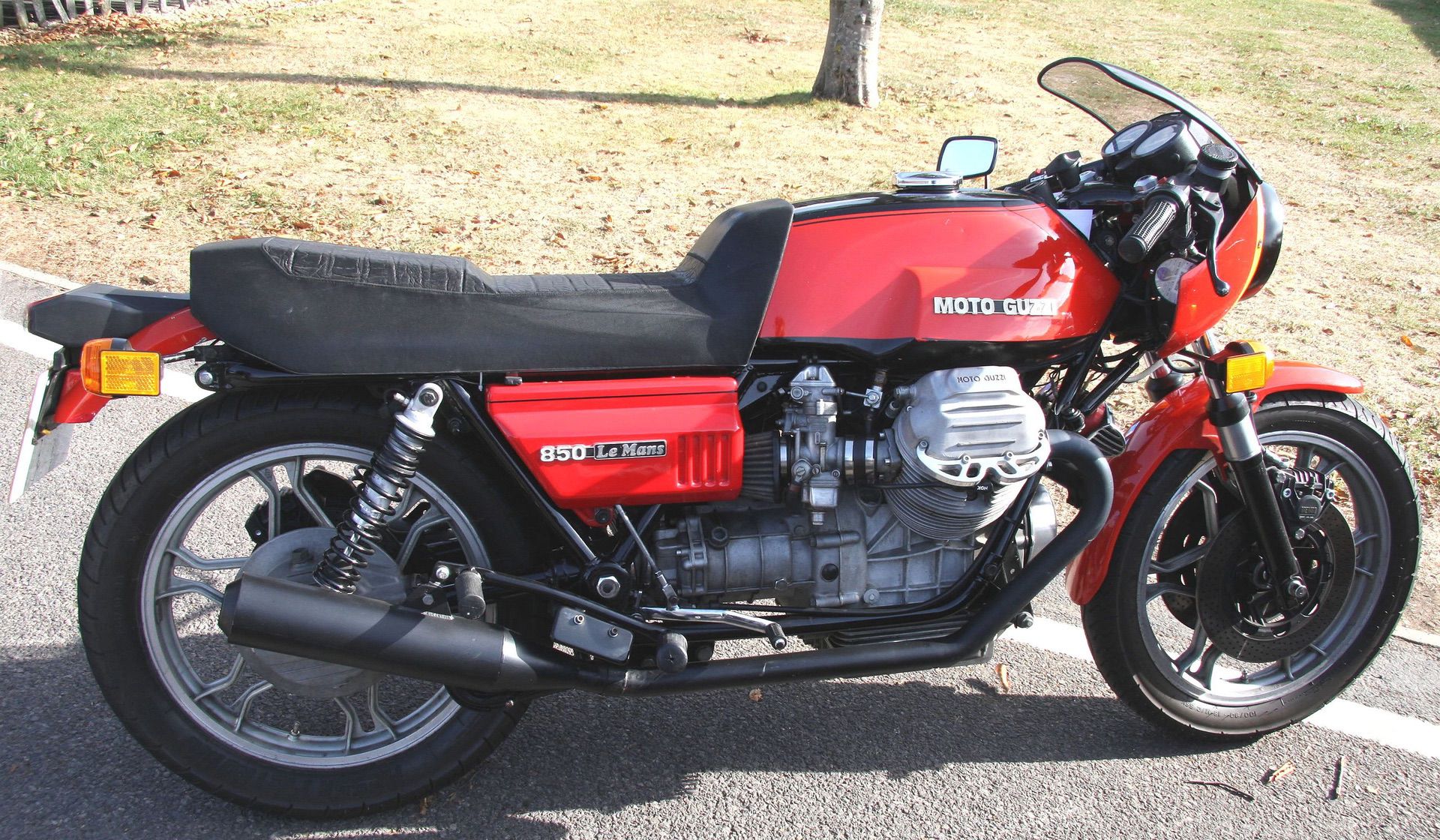
This Italian missile could reach 130 MPH, and would be able to cruise at speed due to having Dell’Orto 36mm pumper carburetors with wide open velocity stacks. It revved hard and high, and its five speed transmission had tall ratios to allow for highway and motorway cruising while keeping the revs low. As well, there was a distinct lack of a chain, as the 850 Le Mans was one of the first sport bikes to use a shaft drive.
So, why is this motorcycle so important in Italian motorcycle history?
The answer to that question is that it is to the Italian market what Kawasaki was to the North American market with the GPz900R. Namely, it was a fast bike, extremely popular, and it cost much less than the competition. Before the 850 Le Mans, if you wanted a true sport bike, you bought an MV Agusta or a Ducati, with both companies charging a bit of a name-brand premium so they could fund their racing programs.
After the 850 Le Mans, you had a viable sport bike that didn’t need to fund a racing program, but it handled and went like a banshee chasing after a bat out of hell. It was able to keep up with bikes such as the Ducati 750 Super Sport, and it was much more reliable than that Ducati as well, while making just as much of a fashion statement as its fellow Italian.
That was the other reason that the 850 Le Mans was revolutionary. It was fast, it was agile, it was inexpensive (compared to an MV Agusta), but it also bled Italian. Every line was perfect, every angle you looked at it from showed the attention to detail, the reasoning and thought behind where each piece went. It didn’t have the grace of a Ducati Super Sport, or the sweeping curves of an MV Agusta 750S, but it was absolutely, undeniably a gorgeous piece of motoring art.
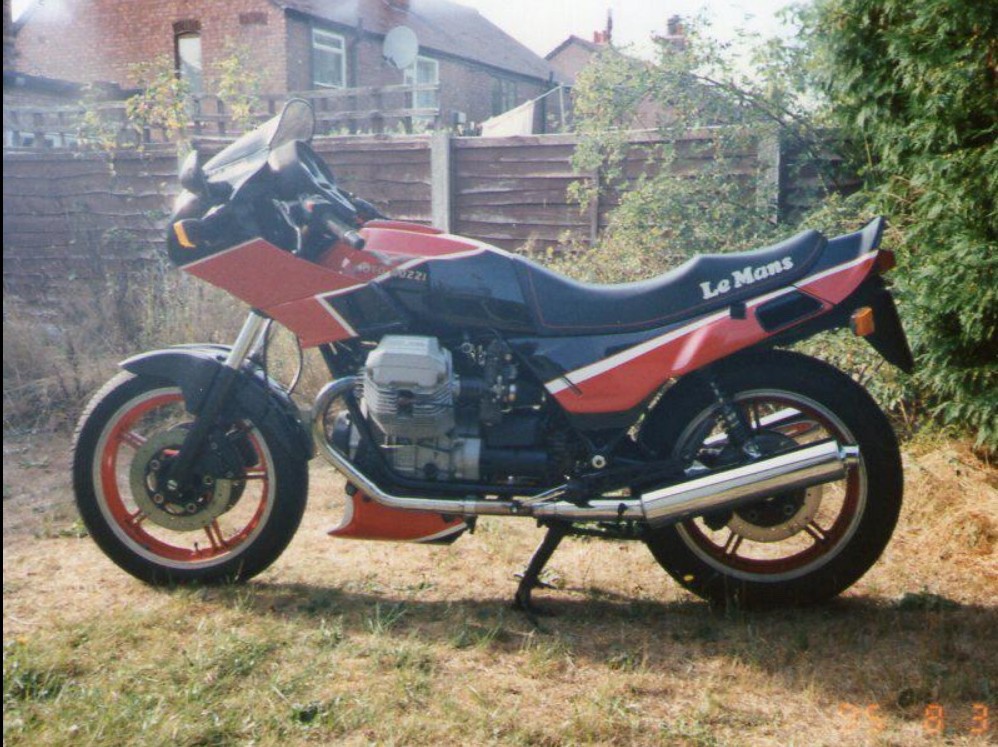
It revolutionized the Italian sport bike market. It showed that there was demand, and more than enough willing buyers, even if the quality of the first series was a bit suspect, for a sport bike to succeed in the market and not need to be derived from a race bike. It is thanks to the 850 Le Mans that today we have such great bikes as the Aprilia RS 660 and the Ducati Panigale V2—bikes that are “cheaper” compared to their flagship cousins, the RSV4 Factory 1100 and Panigale V4 R.
It was the exclamation point on the Italian sport bike market for the 1970s, and even today it still radiates that pure Italian soul. Even better, since it was inexpensive, quite a few 850 Le Mans were sold, so if you really want to have a classic bit of Italian motorcycle heritage, they are available on many sales sites—for anywhere between $5,000 (for a well enjoyed one) to $20,000 (for a near mint one).
How a Century of Design Helped Make One of the Best Selling Moto Guzzis Ever: The V7
We’ve covered the ingenuity of mounting the V-twin transversely, and we’ve covered how that ingenuity and a passion for speed revolutionized the Italian sport bike market. Now, it is time to celebrate the progress that Moto Guzzi has made by sticking doggedly to one engine, one idea, and perfecting the bike around it.
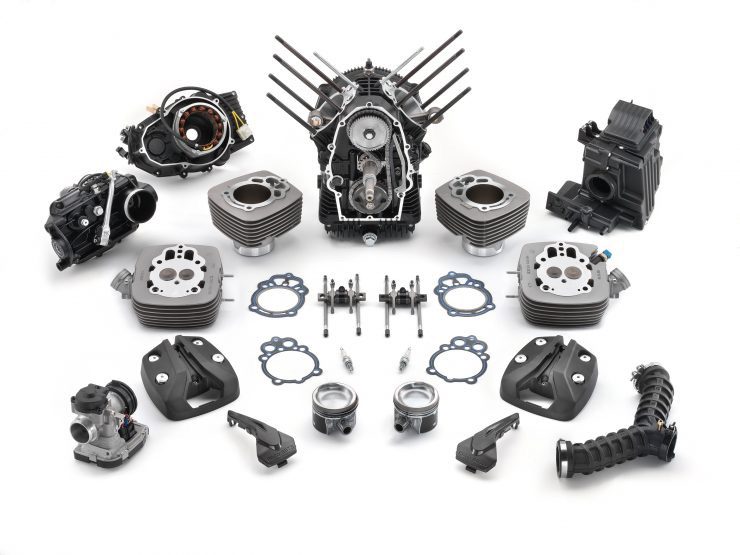
Much like Porsche in the automotive world with the 911 Carrera and refusing to put the flat-six engine anywhere else but way out beyond the rear wheels, Moto Guzzi doubled down on the 750cc transverse V-twin. Instead of moving on to parallel-twins, or reorienting the V-twin back to a “normal” orientation, it stuck to the layout and iterated and evolved, allowing for the engineers and designers to continuously rework and refine the engine.
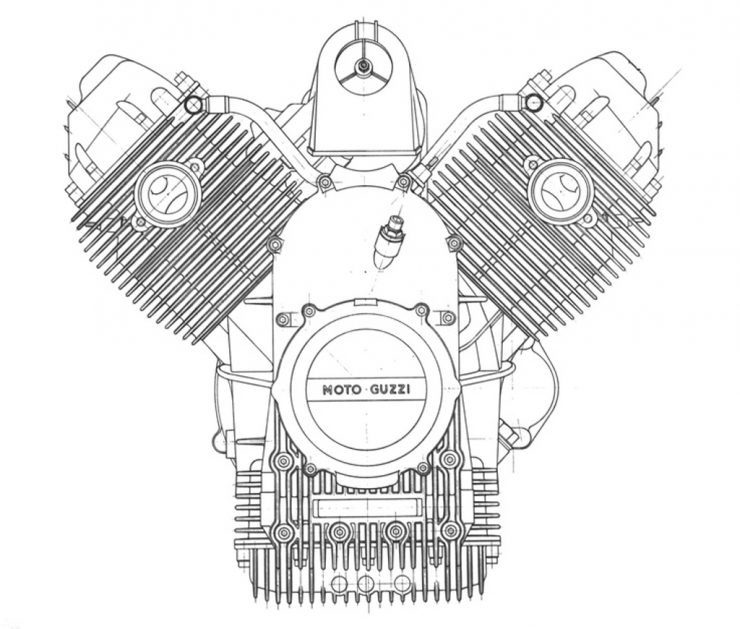
This saw some pretty brilliant bikes emerge, such as the California Touring, a transverse V-twin that was in continuous production from 1971 to 2020, moving up from a 750cc engine to a massive 1,400 ccs by the time it was shuffled out the door.
Another popular model was the 1999 to 2004 V11 sport series. As Moto Guzzi was being passed around between owners by this point, the V11 came about during Aprilia’s tenure at the rudder. A seriously cool looking bike in a modern cafe racer style, it could also be considered a naked as it has no fairings except for the headlight cowling. They didn’t sell all that well back in the early 2000s, but today are prized as one of the best used bargains you can get that is true to the “old school” Guzzi feel.
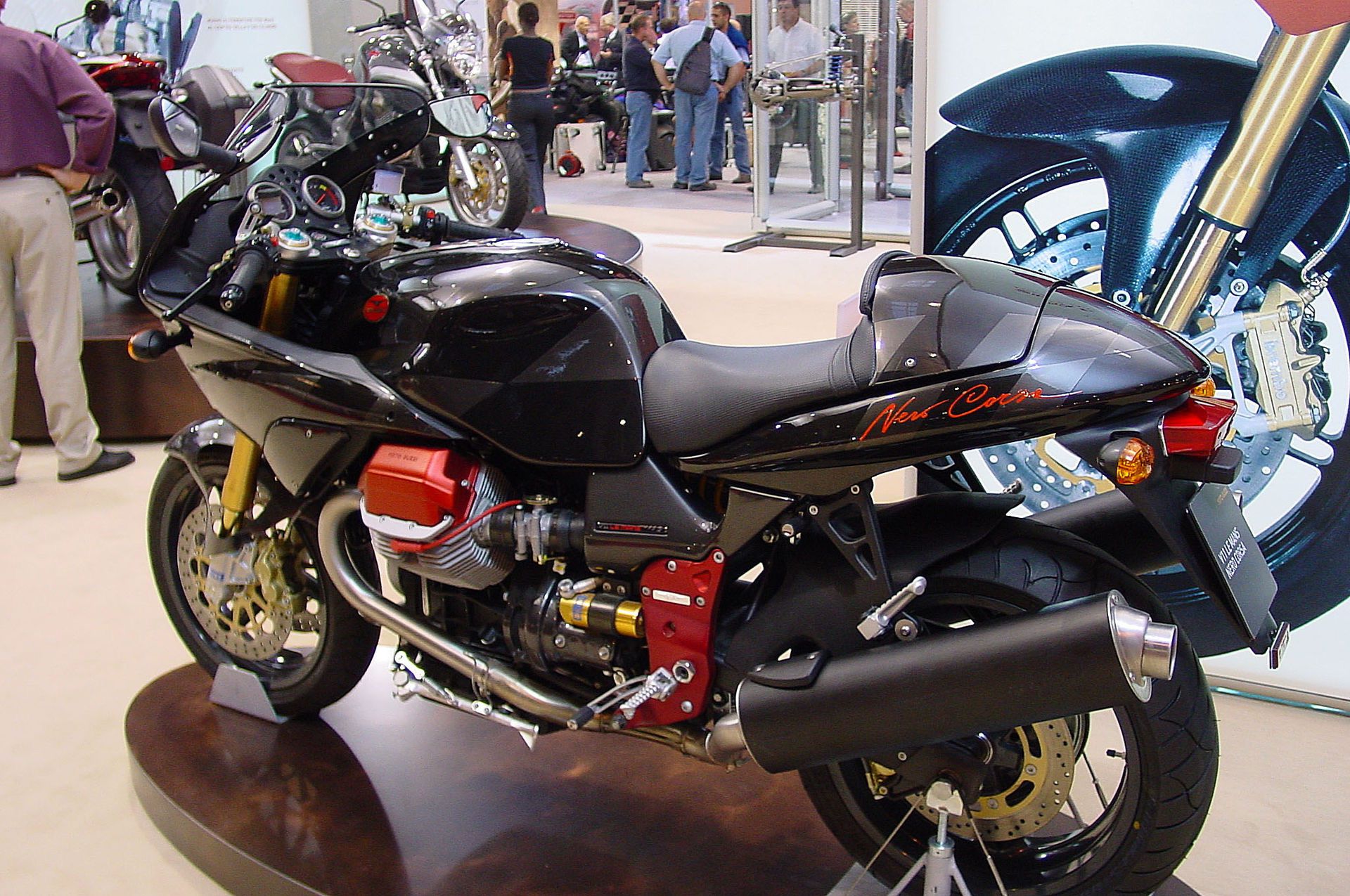
Of course, through all this evolution, the venerable V7 benefitted from the other models. It gained dual overhead cams, direct fuel injection, and a multiplate slipper clutch as just a few examples. It also remained the rock upon which Moto Guzzi relied upon, as no matter what year, style, or color, the V7s continued to leave dealership floors in a steady flow.
Despite sales, numbers never reached the likes of what Aprilia and Ducati were doing, and Moto Guzzi was perfectly okay with that. They were selling over 3,000 V7s a year, with other models making up anywhere from 1,500 to 4,000 on top of that, and that pace has not slowed even up to today. There’s something about the V7 being just over 50 years old as a design that just speaks to the stubborn, steadfast engineering that went into making the thing work, and work well.
Rest assured, the V7 isn’t going anywhere. There will always be a V7 for sale by Moto Guzzi, for as long as the company runs. Even as we enter the electric motorcycle age, it wouldn’t be a bad bet to think that those quirky Italians will instead focus on sustainable fuels, allowing the V7 legend, and the Moto Guzzi legend as well, to continue on for another century.


